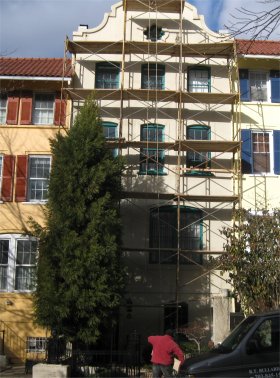 |
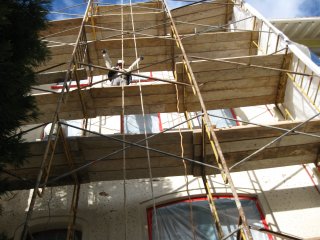 |
This wall is 50 feet high, believe it or not.
Scaffold is set up and tied to building. |
Another view of the scafflold, reaching skyward. |
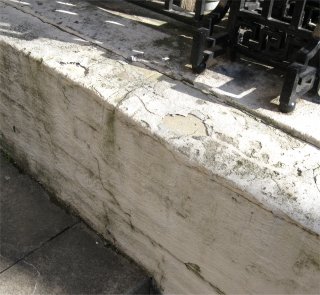 |
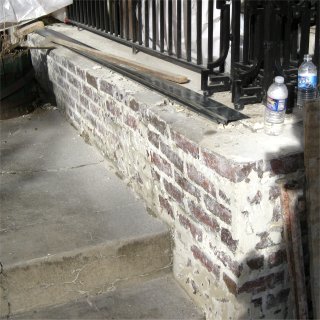 |
| Knee walls on th sides of the yard were in bad shape. The
stucco here was done at a different time than the stucco on the main house
and was badly spalling and deteriorated. |
Knee walls amd side walls were stripped down to the brick. |
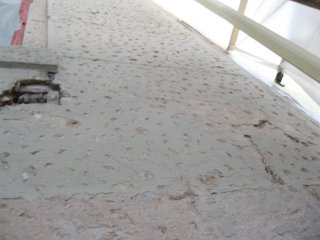 |
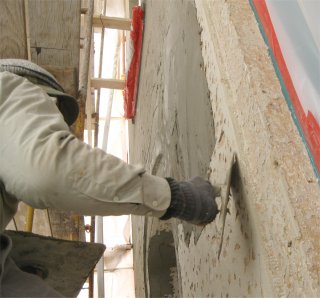 |
Another view of the chipping. The original color here was revealed.
Large cracks were opened up back to the brick, as well as loose areas.
Badly cracked brick work was filled with high strength mortar. |
Wall is coated with cement and sand mortar,
then roughed up for a good bond wih the finish.
Mortar is mixed with a mixture of 50% water and 50% flex-con,
a bonding admixture. |
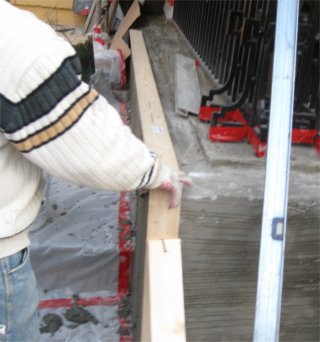 |
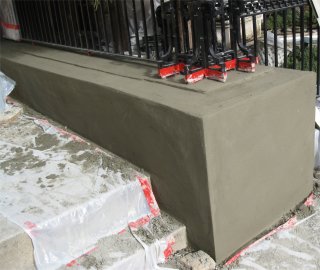 |
| Crooked knee wall is trued up by using one by four corner strips. |
Brown coat on knee walls and strips removed. |
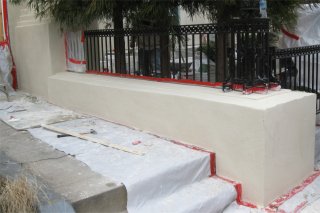 |
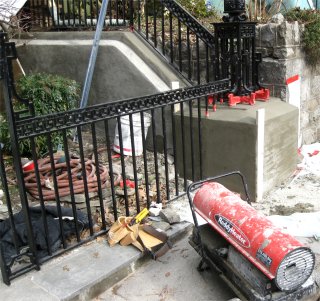 |
| Finished knee wall. |
We did the other side about the same way. Heater sets up mortar on
this cold day. |
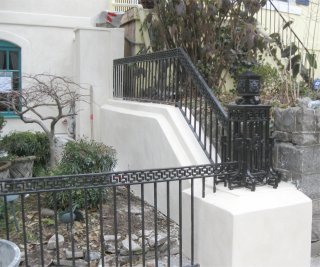 |
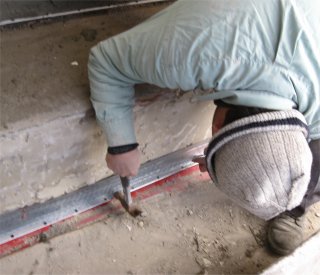 |
Other side finished with natural white cement
and masonry sand finish. Look any better ? |
Weep screed is added to the bottom of the wall. The weep screed has
holes in the bottom for drainage. Photo shows the old stucco cut back at
bottom of the wall to insert weep.
You probably have seen these weeps before on past updates. |
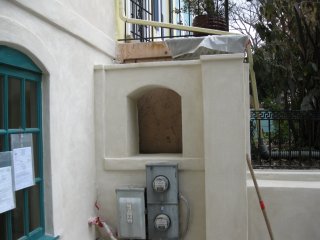 |
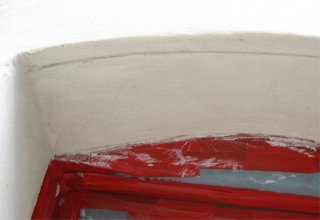 |
| View of the arched opening. |
Top of the window and door returns have a drip groove tooled in. When
water runs down the wall and runs back toward the window, the water hits
the drip groove and falls straight down, preventing water from running
down the window. |
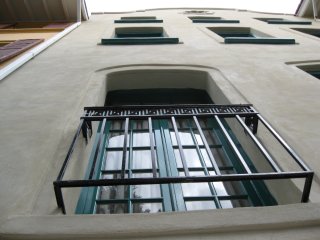 |
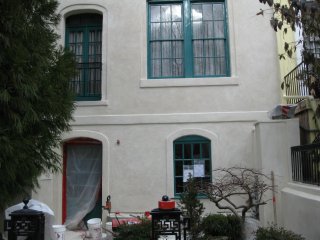 |
| Looking up the finished wall. Color variations and mottling accent
the beauty of the natural color. |
Circa 1930 historic house has a new lease on life. |















